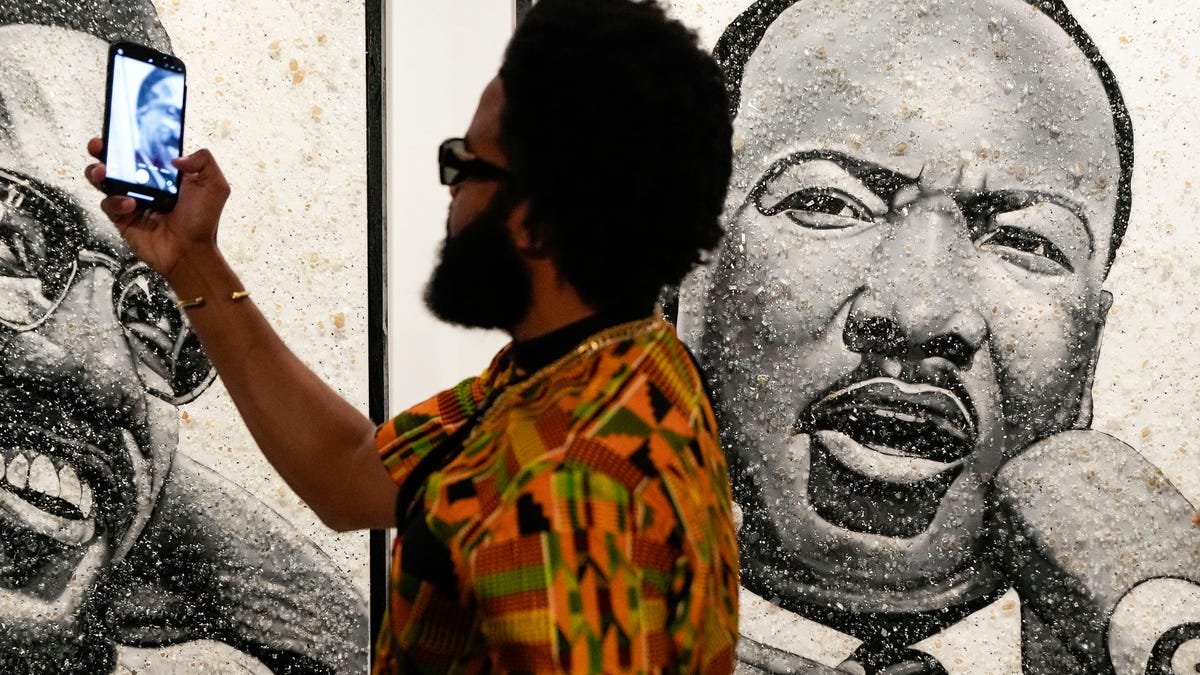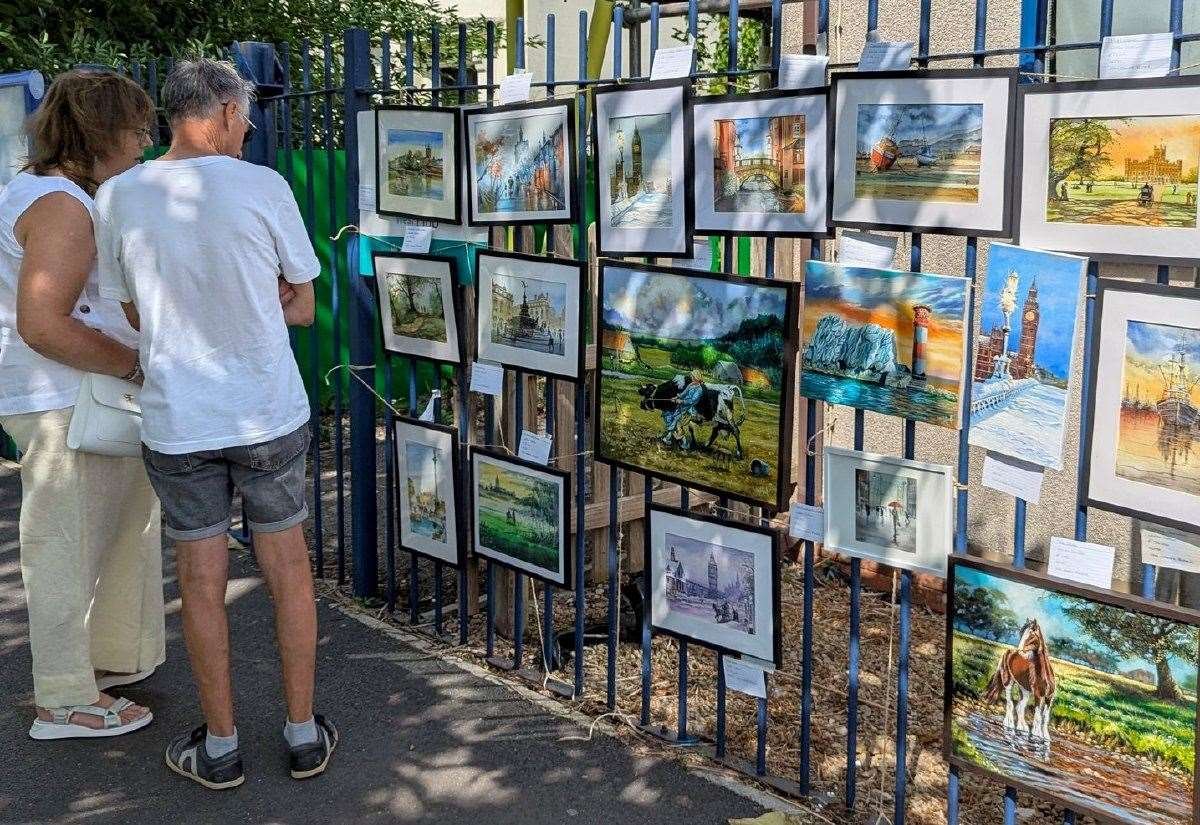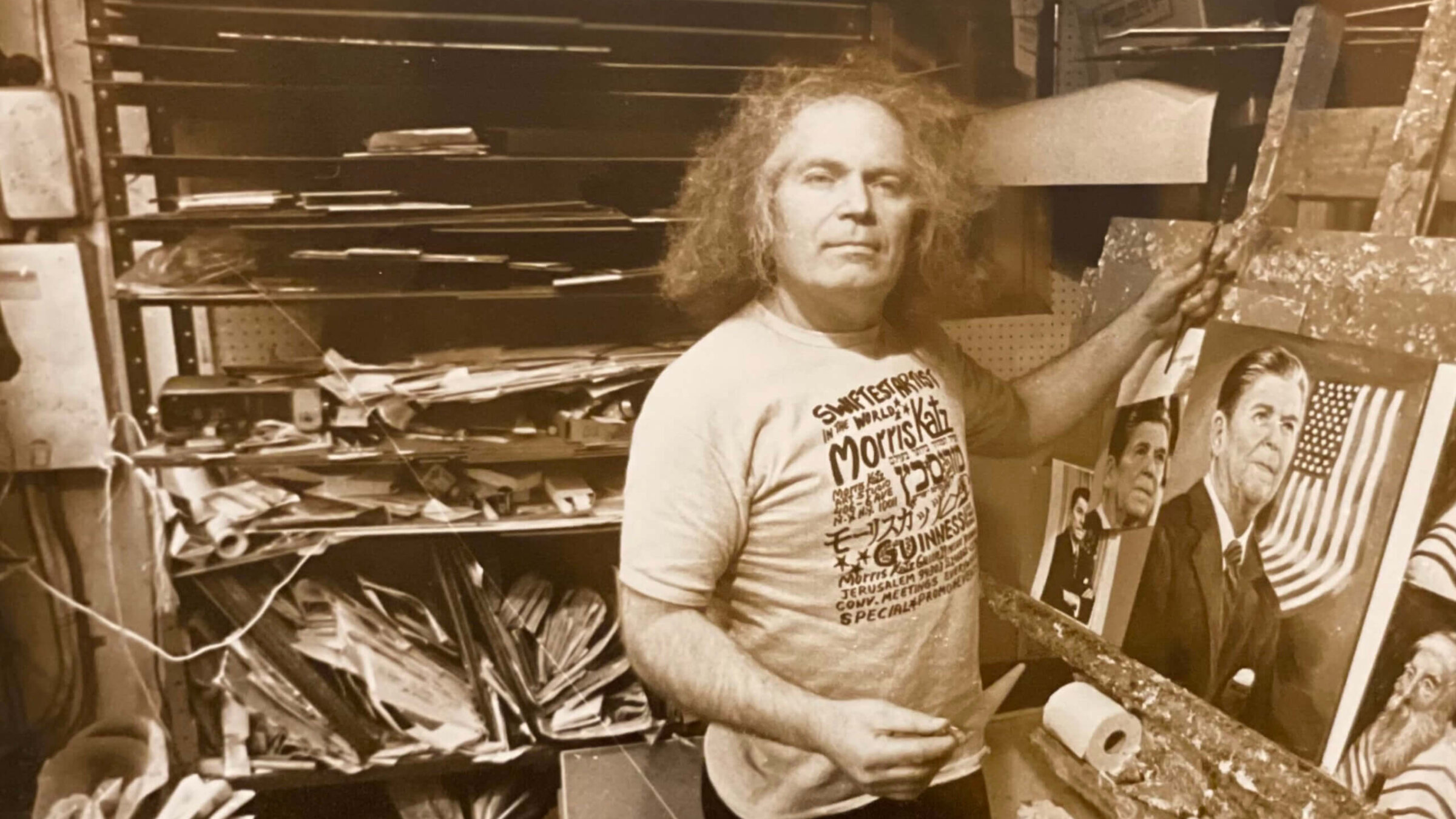
Morris Katz in his studio, working on a painting of Ronald Reagan (he painted every American president up to George H.W. Bush.) Courtesy of Wikimedia Commons
Morris Katz painted like no one else.
He would dip a palette knife into a paint can and use it like a brush, smear a canvas with toilet paper to fill in details and frame the piece to order while schmoozing with an audience. He was so quick that the Guinness Book of World Records cited him twice, once as the world’s fastest painter and the most prolific artist, a title he took from Picasso.
But while Katz, whose unorthodox technique and incredible speed calls to mind a more stimulating Bob Ross, was a mainstay of the Borscht Belt circuit, he is only now, 14 years after his death, getting a New York City show. Starting May 16, The Instant Art of Morris Katz will be on view at YIVO.
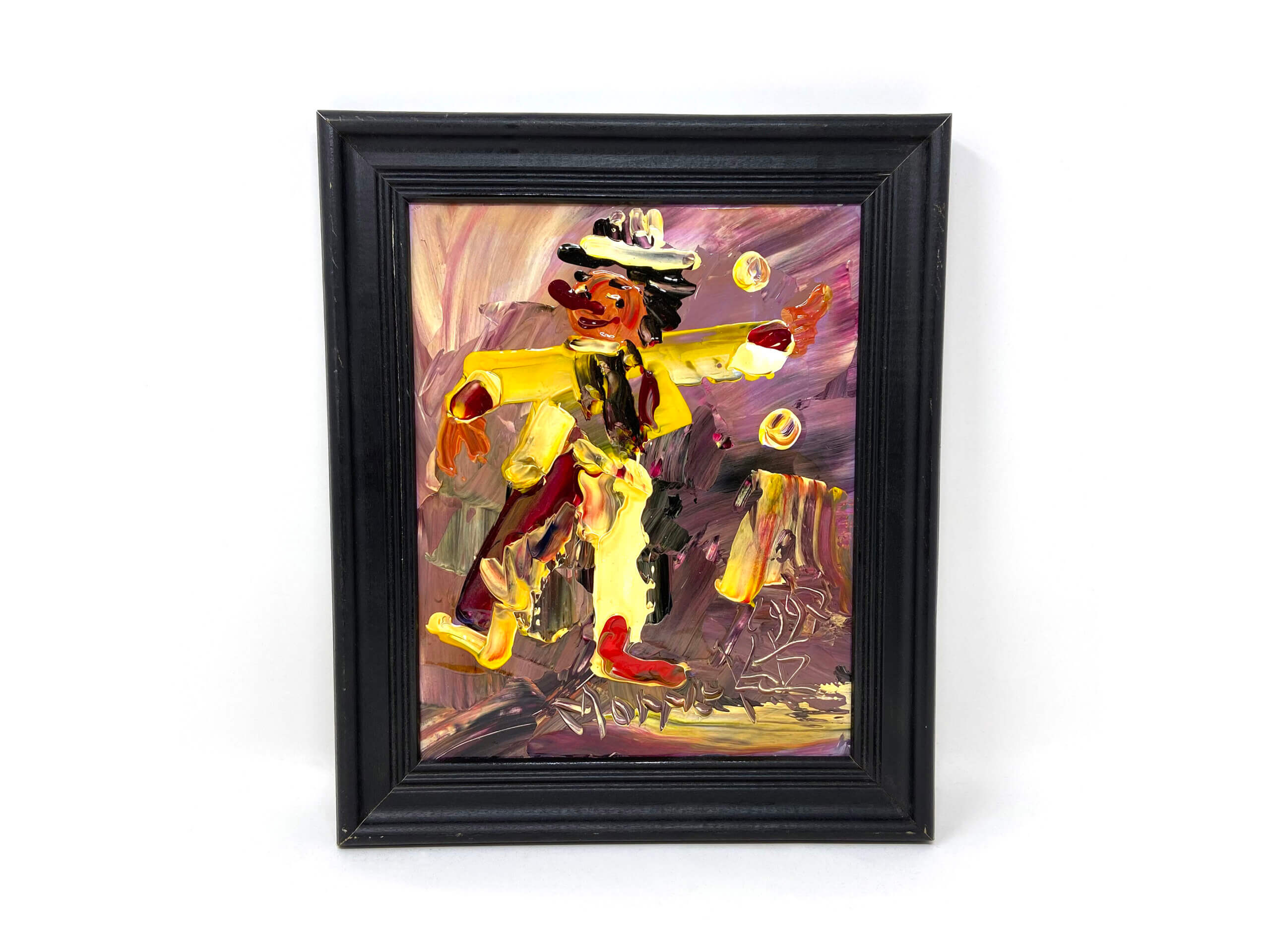
YIVO’s Director of Exhibitions Eddy Portnoy first encountered Katz on a kibbutz in Israel in 1989, where the dynamic Polish-born painter set up 20 easels and filled them all while telling his life story of surviving the Holocaust and learning to paint in a DP camp in Germany. Once he finished his spiel, and his Yiddish jokes with the audience, Katz auctioned off the paintings. People clamored to buy these speedy, if not exactly museum-ready, objets d’art.
“The draw was Morris Katz,” said Portnoy, “He was like a painter tummler, and I guess genuinely a performance artist.”
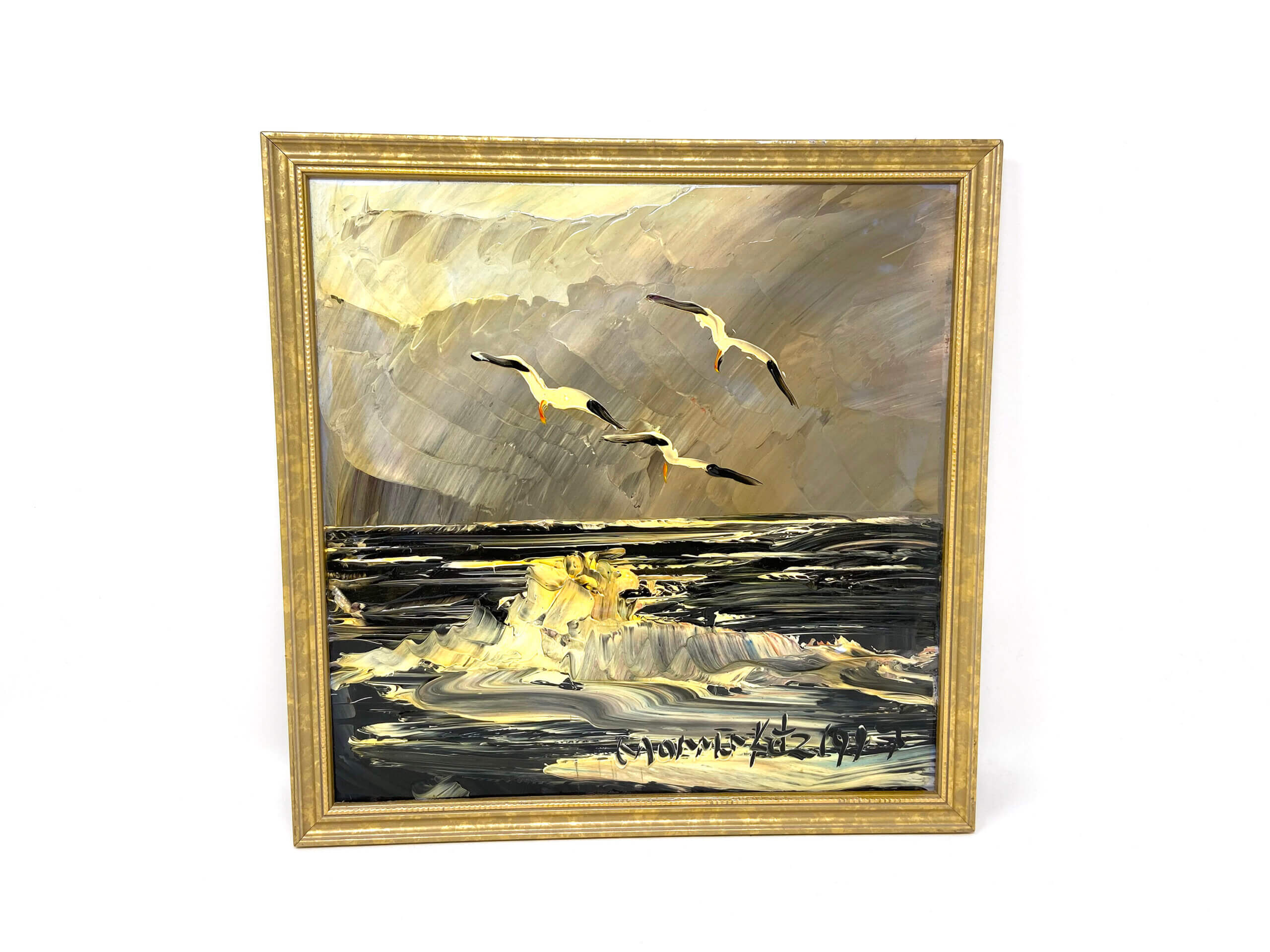
Katz died in 2010, but, through the ‘70s and ‘80s, became a well-known New York character, appearing on local television, and at Catskill resorts where he made art collectors of everyone.
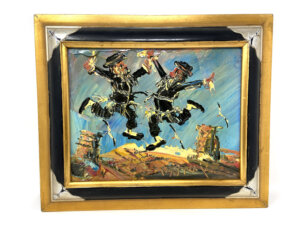
“Talk to anyone who stayed in the Borscht Belt, they almost surely saw him and quite possibly have his paintings in their basement,” said Portnoy.
Katz immigrated to the U.S. in 1949. He took art classes and soon found himself losing patience in the process, developing his brush-free “Instant Art” as an alternative.
A natural showman with a thick accent, Katz has an enduring fanbase, with many young people having inherited his work from their grandparents. (My mother remembers seeing Katz, but doesn’t know if it was at the Nevele sometime in the ‘90s or earlier.)
For the exhibit, which follows a previous show at the Borscht Belt Museum in Ellenville, Portnoy is hanging landscapes, seascapes and Judaica, along clown and animal paintings including a Morris Katz cat. There won’t be a Katz impersonator, Portnoy said, but there will be video of him filling canvases at lightning speed and charming the crowd.
At the opening reception, visitors can walk away with a 5” x 7” painting for a small donation. But, if you have your eyes on anything on the gallery wall, you can take it home with you.
“Everything is for sale,” Portnoy said. “As far as Morris Katz was concerned, everyone needed to walk away with a painting.”

I hope you appreciated this article. Before you go, I’d like to ask you to please support the Forward’s award-winning, nonprofit journalism during this critical time.
Now more than ever, American Jews need independent news they can trust, with reporting driven by truth, not ideology. We serve you, not any ideological agenda.
At a time when other newsrooms are closing or cutting back, the Forward has removed its paywall and invested additional resources to report on the ground from Israel and around the U.S. on the impact of the war, rising antisemitism and the protests on college campuses.
Readers like you make it all possible. Support our work by becoming a Forward Member and connect with our journalism and your community.
Make a gift of any size and become a Forward member today. You’ll support our mission to tell the American Jewish story fully and fairly.
— Rachel Fishman Feddersen, Publisher and CEO







